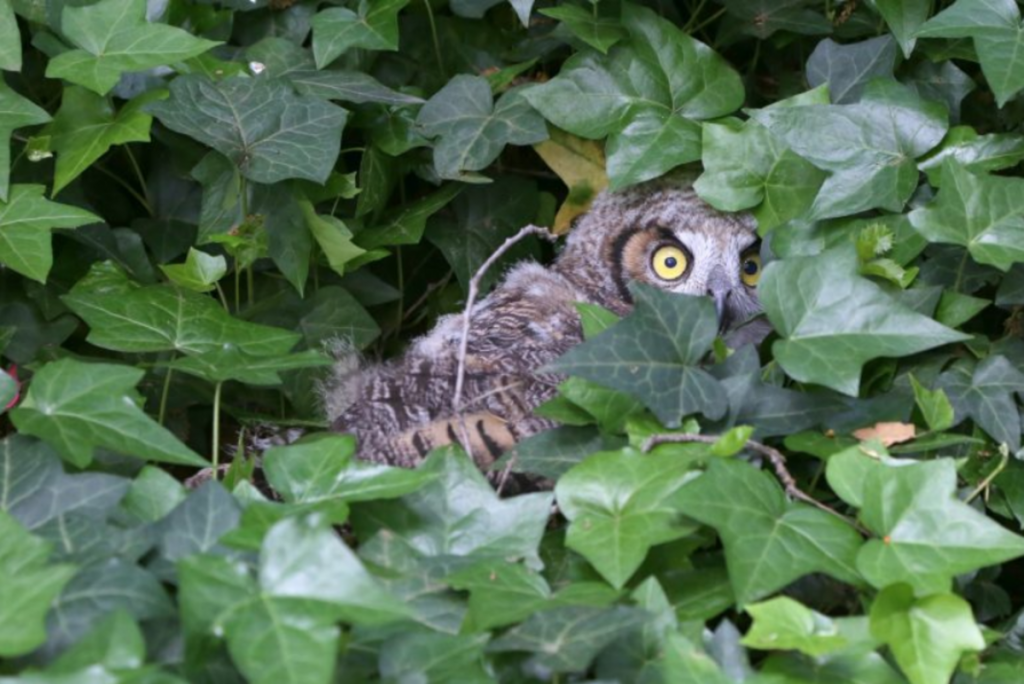Now we have an answer to all those out-of-towners who sniff, “How can you live in Los Angeles? Personally, I need trees. I need wildlife.”
In fact, Southern California happens to be the most biodiverse area in the entire United States.
I learned this at “Growing Habitat: LA’s Wildlife and Descanso,” an exhibit running through August 19 at La Cañada’s Descanso Gardens.
Created in partnership with the Arroyos & Foothills Conservancy, the goal is to demonstrate that “a vibrant and resilient habitat is full of movement and connection and wildlife — both seen and unseen.”
But the context is broader than just conserving land. The hope is to create wildlife corridors through parts of the Verdugo and San Gabriel Mountains within which wildlife can flourish: east to the Arroyo Seco, north to the Angeles Forest, south to the LA River.
The exhibit is housed in the nicely air-conditioned Sturt Haaga Gallery. There’s plenty for kids: a stuffed bobcat, microscopes through which to examine minute holes in leaves, poppy seed packets to decorate.
But there’s also plenty for the interested layperson, fledging wildlife photographer and even scientist.
The short introductory video features several “camera trappers,” who place either commercially bought or homemade cameras with motion sensors out in the wild. Then they sit back and wait. The exercise requires a deep knowledge of how the animals move and live. Oh yes, and patience.
Descanso is located on the northern tip of the San Rafael Hills. Though many of its plants are arranged by design, the area also coexists with much “wilder” plant and animal life on-site and in the surrounding areas: coyotes, cottontail rabbits, butterflies and even black bears, who are especially partial to suburban swimming pools.
Native-coast live oaks provide shelter and food for many of those animals. Bright blue scrub jays nesting in the trees’ upper branches send out noisy alerts to their brethren.
California ground squirrels dig burrows that can be 6 feet deep and 35 feet long. Networks of fungus and tangled root balls thrive underground.
Acorn woodpeckers bore holes in “granary logs” and stuff them with acorns, the way a gourmet cook might lard a pork loin with prunes. The spongy oval-shaped walnut-sized pods I’d collected on a hike in Temecula, I learned, are called oak-apples and are formed by the tree around the developing larvae of a gall wasp.
Los Angeles and Mumbai, India, are the only two megacities in the world with “big cats” living within their limits. P-22, a then 3-year-old male mountain lion, was discovered in 2012 on an “island” between the 101 and 405 freeways. P-22 was once found taking a nap in a neighbor’s residential crawl space and is the suspect in the March 3, 2016, murder of an LA Zoo koala bear.
Owl boxes, providing a place for the birds to nest, are a good alternative to rodenticides, which spread poison all the way up the food chain. Owls apparently enjoy a nice meal of rat, bat or vole.
Alia Warden, a high school student at Pasadena’s Westridge Girls School, has helped more established community scientists to provide an illustrated guide to the snails and slugs of Southern California. Bravo!
A small display of “Naturalist’s Journals” was especially delightful. Heath Massey, Debbie Drechsler, Irene Brady and others sketch watercolors of birds, trees, butterflies, mushrooms and flowers, jot down measurements, and describe bird calls (for example, “bee bee bee bee bee bee, fast, run together”). Their notebooks hark back to a simpler, quieter time.
Descanso is well worth a trip, apart from this instructive exhibit. Its world-famous camellia collection peaks in February and March.
Also on offer are separate Lilac, Rose and Japanese gardens, a lake and an area devoted to California natives. The Oak Woodland section, newly opened in 2014, aims to recreate the “heritage landscape” of the Los Angeles Basin, and includes grasses, perennials, shrubs and oaks.
The grounds comprise 160 acres and the lower parts are by far the more heavily populated. After leaving the gallery, I meandered Descanso’s upper reaches.
The temperature that day easily topped 100. The fragrance of warm summer grasses, sage and decaying leaves was irresistible. At the top of a secluded hill I reached what looked like a skeletal Japanese tea house, painted dark brown, shaded by tall old trees.
I clambered inside and was rewarded with the sense of having a secret corner of the world all to myself. A padlocked door read “First Aid.” An old-fashioned glass-fronted wooden cabinet, also padlocked, held a display of small ivory-colored skulls — a possum, a fox, raccoon, a rattlesnake.
The little structure was lined with narrow benches. Beginning to drowse in the afternoon sun, I used my extra shirt for a pillow and stretched out. A spider lazed in the rafters. High above, sycamore branches rocked in the breeze. Except for the chirring of insects and the birdsong, the place was dead quiet.
“Descanso” means “place of rest” in Spanish.
There, surrounded by friendly wildlife, I slept.

